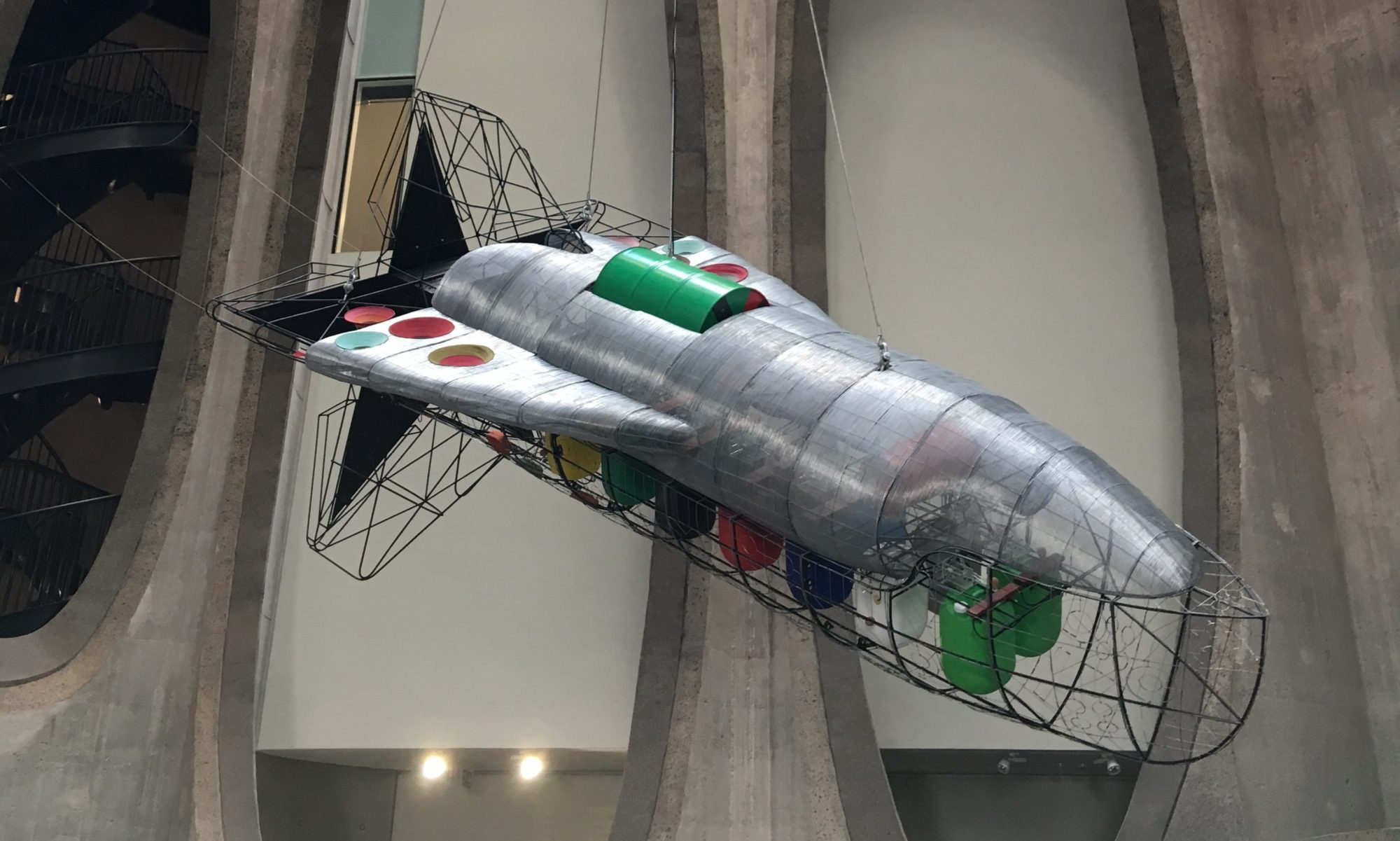Dubship I – Black Starliner (2019 – ongoing) is a large-scale audio-mechanical spaceship sculpture that memorialises the first ship in the Black Star Line shipping company, launched by the political activist Marcus Garvey in 1919 with the aim of repatriating the descendants of African slaves back to Africa. Garvey is regarded as a prophet by Rastafarians, and the Black Star Line is immortalised in dub and reggae culture. Dub’s sound effects and use of powerful sound systems transport the listener, and have influenced science fiction and fantasies of space travel as an echo of this desire for transcendence. Read the full label text from its first exhibition.
The sculpture was produced using African street wire-art techniques, combined with cutting-edge VR sculpting tools to produce a real life ‘wire frame’ in metal rod and galvanised steel wire. It contains a cargo of plastic jerry cans and wooden marimba notes that are struck to produce sounds, amplified through a sound system and FX units and broadcast out of a star-shaped speaker cabinet. The track is sequenced by a rotating oil-drum perforated with a pattern of holes through which light shines to activate an array of strikers, making a version of Fred Locks’ classic dub track Black Star Liner. The video above shows some of the process of making the sculpture.
Dubship I – Black Starliner was exhibited at the Zeitz Museum of Contemporary African Art in Cape Town from April – August 2019, on the show Still Here Tomorrow… The sculpture’s design responded to the museum’s iconic atrium space designed by Thomas Heatherwick, carved out of century-old grain silos in the shape of a maize kernel. The sculpture was produced with funding from the National Arts Council of South Africa. It is an African Robots and SPACECRAFT project by Ralph Borland.


